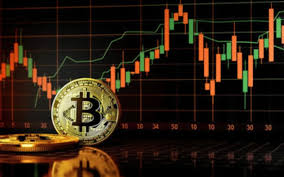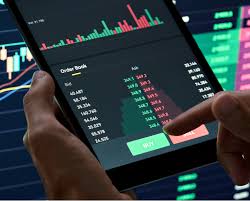
Understanding Crypto Trading High-Frequency
High-frequency trading (HFT) in the cryptocurrency market has risen to prominence with the advent of advanced technology and increasing market volatility. This trading style enables traders to execute thousands of orders in fractions of a second, capitalizing on minute price changes. For those looking to delve deeper into the intricacies of this form of trading, Crypto Trading High-Frequency click here for more insights on investment strategies.
The Basics of High-Frequency Trading
High-frequency trading refers to the use of sophisticated algorithms to analyze multiple markets and execute orders based on market conditions. It employs high-speed data networks to ensure that transactions occur at extraordinary speeds, often in milliseconds or even microseconds. The speed and volume of trades allow HFT firms to profit from small price discrepancies that may only last for a second.
Technological Foundations of HFT
The technology stack for high-frequency trading is crucial to its success. Traders utilize powerful computers and high-performance networking equipment to reduce latency. This infrastructure supports complex algorithms that can analyze vast amounts of data quickly and make decisions with minimal human input.
Algorithm Development
At the core of HFT are algorithms that dictate trading strategies. These algorithms are designed to identify trading signals and patterns in the market. Algorithms can vary significantly, from simple statistical models to complex machine learning systems capable of adapting to changing market conditions.
Data Analysis and Signal Processing

High-frequency traders rely heavily on data analysis. They process news feeds, social media sentiments, and market data to forecast price movements. Techniques such as natural language processing (NLP) can be particularly useful in interpreting market sentiments efficiently, which can, in turn, influence trading decisions.
Market Strategies Employed in HFT
There are numerous strategies employed in high-frequency trading that traders leverage to maximize their profits. Some of the most common strategies include:
Market Making
Market making involves providing liquidity to the market by buying and selling assets continuously. HFT firms earn the spread between the buying and selling prices, benefiting from the volume of trades executed over time.
Statistical Arbitrage
Statistical arbitrage involves the simultaneous buying and selling of correlated assets to exploit pricing inefficiencies. HFT firms utilize statistical models to identify opportunities where the price of an asset diverges from its expected value, allowing them to profit from reverting effects.
Momentum Trading
Momentum trading focuses on the principle that assets that have performed well in the past are likely to continue moving in that direction. HFT traders implement algorithms that can quickly identify and capitalize on these price trends, often leading to profitable trades.

The Role of Exchanges in HFT
Exchanges play a critical role in the high-frequency trading landscape. HFT firms typically prefer exchanges that offer low latency and high volumes. Additionally, exchanges offering direct market access allow traders to place orders directly into the order book, reducing time delays and improving execution speeds.
Risks and Challenges of High-Frequency Trading
While high-frequency trading offers significant profit potential, it is not without its risks. The reliance on technology means that any failure in systems, networks, or algorithms can lead to significant losses. Furthermore, market conditions can change rapidly, and high-frequency traders often face regulatory scrutiny, especially during times of market volatility.
Market Manipulation and Regulatory Concerns
Regulators have initiated discussions regarding the market impact of high-frequency trading. Because HFT can lead to instances of price manipulation, exchanges and regulatory bodies are working towards frameworks that ensure fair practices. Compliance with these regulations is essential for HFT firms operating in the cryptocurrency space.
The Future of High-Frequency Trading in Crypto
As technology continues to evolve, the landscape of high-frequency trading in cryptocurrencies will undoubtedly change. Advances in artificial intelligence, blockchain technology, and data analytics are set to enhance the sophistication of trading strategies and execution methods. The ongoing development of decentralized finance (DeFi) platforms may also introduce new opportunities and challenges for high-frequency traders.
Conclusion
High-frequency trading is a fascinating and complex aspect of the cryptocurrency market that leverages speed and technology to maximize trading profits. While it offers lucrative opportunities, it also presents various risks and regulatory concerns. Understanding the foundations, strategies, and implications of high-frequency trading can empower both new and experienced traders to navigate this dynamic landscape effectively.
Leave a Reply